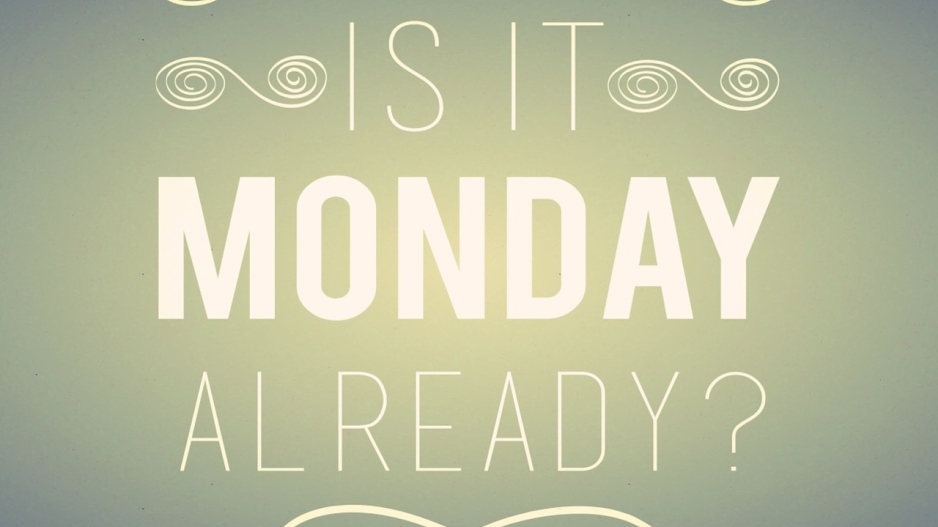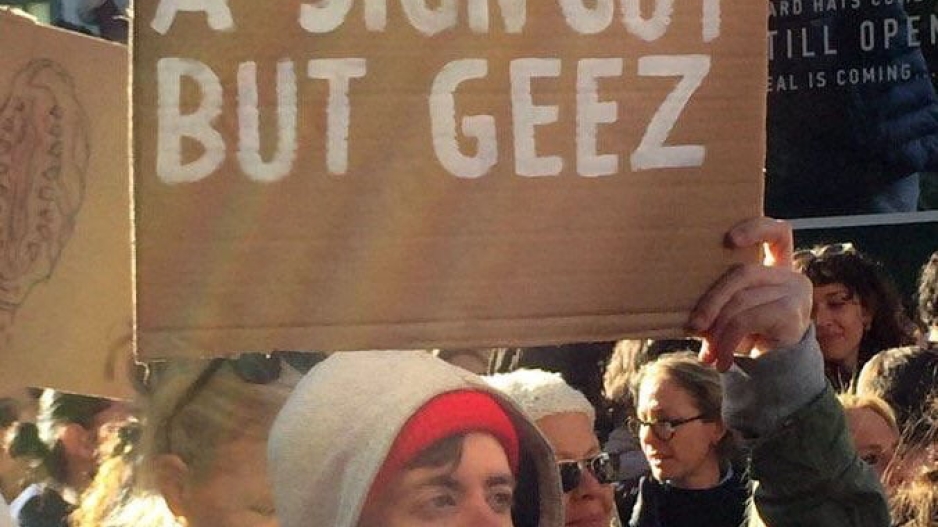On Saturday, January 28th, 2017, Shaun King, writer and civil rights activist, wrote this on Facebook, “Today has been, without a doubt, one of the most despicably inhumane days in my lifetime as an American citizen. Grievously inhumane. This day will go down in history as a deeply unethical, unnecessary, unconstitutional day of pain and chaos caused solely by Donald Trump. Anyone who has not spoken out against it will be forever stained by it.” This got me thinking about those white folks who expressed shock, sadness, complete and utter dismay on November 9th, 2016. It was for some impossible to consider that racism and white supremacy, not only still existed, but absolutely propelled someone into the highest office in this country because of his hatred and bigotry.
ShiShi Rose wrote,
“For some people, their outlook of this country deeply changed on November 9th. For the rest of us, this is how it has always looked. I want to remind you that that is a privilege. It's a privilege that white supremacy wasn't at the forefront of your reality, because you benefit from it. I want to remind you that no ally ever got very far, in any movement, without acknowledgement of their own privilege daily. You do not just get to join the efforts that people of color have been working for their entire lives to both teach and survive, without doing work, too. You don't just get to join because now you're scared, too. I was born scared.” (2016)
Some of these white folks have been marching. Marching in Washington and other cities the day after the inauguration. Protesting at airports after the Muslim ban unconstitutionally detained immigrants and refugees. Some of them marched because the equilibrium they believed existed was now out of balance, making them feel personally attacked and in danger. This equilibrium was and is a fallacy. It was always a fallacy. A myth. A dream. A slumber from which they awoke when for the first time they felt targeted and marginalized, feelings women of color have felt for generations.
Some of these white women made hats and took lots of instagram pics and came home feeling empowered. But, the question remains, empowered for what? How will we march on? For what and for whom will we continue march? What will marching on require of us? After the Women’s March, Jay Smooth, cultural commentator and activist, asked, “What will you do on Monday?”

Really, the tasks for Monday after the march, and every subsequent Monday, lay within white folks themselves. Erin Dunlevy, one of our CSS equity coaches and a restorative justice facilitator, a white woman, describes the work of racial transformation with which white folks must engage.
“It's not the responsibility of people of color to midwife us through the labor of racial transformation. As I see it, many whites, myself included, have often attempted to construct our non-racist identity outwardly by engaging in communities of color in varying capacities. But to my understanding, the true work is not outward right now; it is a commitment to moving inward and backward, first by honestly confronting where we have been lacking in our racial understanding, and then through our own histories and back into the history of the nation to really understand how we are the direct beneficiaries of white supremacy. This, I think, is counterintuitive to how diversity work is often done. Typically we take a "history first" approach. This strikes me as extrinsic learning. I think real transformation is intrinsic. It comes from a place of truly acknowledging and understanding the whole self, seeing where we have been lacking, where white supremacy has carried us when we thought we were walking alone, and then moving into the past to understand our origin stories in a deeper way.” (Dunlevy, 2016).
Much of this racial transformation prompts white folks to acknowledge the privilege their identity affords them. Specifically, the white women who marched and stood up for gender issues, never having stood for racial justice before, must understand that they have the power to enter or exit this movement without the real possibility of grave danger, of being dehumanized, of fearing for their lives.

“Recognizing privilege means acknowledging that our societal norms allow White women to toggle their identities, meaning they can choose to be a woman and choose to be White. Combining these two social identities, White women can be both helpless without the helplessness being a reflection of all White people and powerful by occupying a position of power as any White person. Women of Color do not have the option of toggling their identities in this manner. When a Woman of Color acts, her actions at some level reflect upon her racial community, and she cannot centrifuge her racial identity from her womanhood” (Motwani Accapadi, 2007).
When a white person understands that this afforded choice to participate or engage at will is because of who they are, then they can get to the deeper place of acknowledging the many people who will never have this choice. Black and Brown people fight because this world dehumanizes and threatens their bodies and the bodies of their children and families everyday. Fighting is no choice. During this past weekend as we watched the administration institute a Muslim ban, I spoke to a few white friends who told me it was all just too much for them and they were starting social media and news blackouts. They were taking a break. Stepping away for their own good. Now, self care is a personal journey. But, I will say, there is an urgent imperative that requires white people more than anyone to engage in a way they may never have felt before. If you are a white person, who has up until this moment marched once or less and never actually stood up for racial justice, fought against racism, called out bias you hear or see, then I am not sure I think you deserve a break yet. Your march is just beginning.
When I think about the incredible hate and violence that has existed for generations but is now spotlighted and publicly welcomed at the highest levels in this country, I am left with this simple visual: HATE can never be lower case. By its nature, it is always in SHOUTY CAPS and so resistance, too, must counter with force and might. RESISTANCE. For too long, white folks have barely been writing on the same page as Black women, as protesters of color in general, who have given their lives fighting against white supremacy. White folks passively sit on the sidelines penning soft and self-serving messages of women’s rights being human rights… we are all humans... and… can’t we go beyond judging each other by our color. All the while they continue to feed the system as they accept the benefits from it without resisting its power.

Which brings me back to Shaun King’s words where we began, “Anyone who has not spoken out against it will be forever stained by it.” So, what does the continuing march look like? Well, it means doing everything in your power to disrupt and dismantle white supremacy within all the spheres that you influence (adapted from Gorski, 2016). If your career arms you with the skills to support in the fight like these attorneys below, then that is a great start, but for those who work in more oppressive structures where racism has toxically infiltrated the institution, you must dig deeper.

What does the continued work look like?
- If in your workplace, the conversation is about what diversity can do for us, speak up about shifting the approach to one that asks how we can promote a positive climate for culturally and linguistically diverse staff.
- Continue being an activist by attending events, protests, and marches that center Black and Brown people. Follow Sam Sinyangwe and Shaun King to see how you might be able to join the movement using the skills you already have. Newsletters I would recommend include: #Educolor, Colorlines (Race Forward), NY Times Race Related, The Root, Fusion, African American Policy Forum, Blavity, Truthout, The Marshall Project, Mic.com, Arab American Association of New York, and Black Then.
- Do the work in your own community with other white folks. There are organizations like Showing up for racial justice (SURJ) that are tailored toward rallying white people for racial justice. Much of the work has to occur in affinity spaces. This also means calling out your relatives, friends, and loved ones when their language is offensive and certainly when their actions are HATEFUL.
- Read up on resistance and fighting the hate spewed by the man who won. Gather with communities who are doing the work #disruptJ20. There is literally a Resistance Manual and a Guide to Resistance.
- Build your own capacity by reading books that tell of the reality that has been whitewashed out of the texts and media many of us were and are exposed to up until our adult lives- The New Jim Crow: Mass Incarceration in the Age of Colorblindness by Michelle Alexander, Just Mercy by Bryan Stevenson, Between the World and Me by Ta-Nehisi Coates, Deep Denial: The Persistence of White Supremacy in the United States History and Life by David Billings, and Stamped from the Beginning: The Definitive History of Black Racist Ideas in America by Ibram Kendi to start.
- Grab your wallet, meaning shun those businesses that support HATE. Consciously choose to bank and shop and visit businesses and restaurants owned by Black and Brown folks. Read books and watch films created by Black and Brown authors and artists.
-
Don’t just do one of the above items. Tackle all of them. Inquire about more. Create your own. Keep Shaun King’s words in your mind and consider if, looking back in 20 years, you will see yourself as one who stood up and fought? Will you be one of the ones working to dismantle this system of racial injustice and reimagine a society where none is privileged over another?

